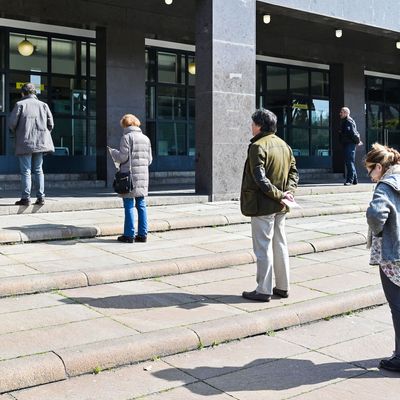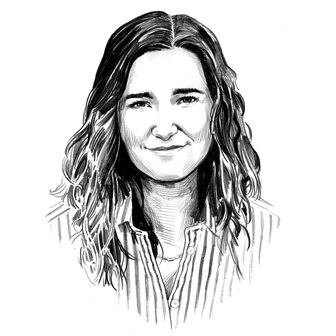
Please note the story you’re reading was published more than a day ago. COVID-19 news and recommendations change fast: Read the latest here to stay up-to-date. We’ve lifted our paywall on all essential news and updates about the coronavirus.
As COVID-19 continues to spread across the world, public-health recommendations grow more stringent: Italy is currently on lockdown, while in the United States, several states have declared states of emergency, schools are closing, events are being canceled, and stockpiling continues. Healthy citizens’ movements remain largely unrestricted, and confirmed cases in the U.S. appear relatively low. But we know domestic testing for coronavirus is woefully limited, and public-health experts expect continued community transmission across the country — particularly if we don’t take more drastic measures, like social distancing.
Social distancing refers to a public-health protection measure meant to reduce and slow transmission of disease. Currently, social distancing is neither required nor enforced in the United States, though sick people are expected to self-quarantine and seek medical help. (It is not yet clear how people without paid sick leave will be able to do so.) But as a recent Vox graph shows, protective measures like self-quarantine and canceled events can vastly reduce the number of COVID-19 cases, and experts say it’s one of the best public-health measures we have. So what does social distancing look like? (Can you still have friends over? Can you go to the gym?) We got in touch with Lori Uscher-Pines, a senior health-policy researcher at the RAND Corporation, a nonprofit global policy think tank, to learn more.
Why is social distancing important?
In an infectious-disease outbreak, there are two types of intervention: pharmaceutical (like vaccines and anti-virals) and non-pharmaceutical, explains Uscher-Pines. Social distancing is one of the best — and the only — preemptive, non-pharmaceutical measures available on the larger population level. “Social distancing plays a big role before the medical community can create vaccines and appropriate treatments,” says Uscher-Pines. “It’s one of the only tools that we have to really slow down the progress of an epidemic or pandemic.”
By avoiding other, potentially sick people, we reduce our own risk for contracting and spreading illness at the same time that other people are getting sick, thus reducing the demand on hospitals and health-care workers. (For a harrowing look at what happens when we don’t reduce that demand in time, see this Twitter thread out of Italy.) Health-care workers have more time and resources to find vaccines and treatments when they aren’t entirely occupied with trying to keep sick people from dying.
Do I need to practice social distancing if I’m healthy?
Social distancing is not currently among public-health recommendations and requirements for most people in the United States, so it’s not like you’re breaking the law if you’re not doing it. The tricky thing is that social distancing works best when done preventatively, before things get really bad, says Uscher-Pines. But there are downsides, too — canceled events mean lost money (and sometimes lost jobs), and self-isolation can be hard on one’s mental health. For that reason, says Uscher-Pines, many public-health officials find it challenging to decide when to instate social-distancing regulations.
The bottom line is this: Social distancing is good for the community, and a crucial preventative measure — if not entirely without complications.
Can I go out to eat? Can I go to the gym? Can I drop my kids off at school?
Social distancing is a scary prospect for most people, and it’s hard to know — without strict, aggressive measures like those under way in Italy and China — what exactly “counts.” At this stage, says Uscher-Pines, a lot of it comes down to a personal calculus: “If you are personally concerned about COVID-19, you should try to limit your contact and exposure to crowded places, and try to maintain a distance of three to six feet [from other people],” she says. “More importantly, you should adhere to public-health recommendations when they come out.” Err on the side of a liberal interpretation, when possible — for instance, if (and when) schools close, keep kids away from their classmates outside the school building too. “A big concern with something like school closure is that school will be closed, but then kids will mix on their own outside of school, and that kind of defeats the purpose,” she adds.
Available evidence from other countries suggest that the United States is underprepared, at best, for the transmission of COVID-19, and we have no reason to think ourselves exempt. Without universal health care and paid sick leave, not everyone will be able to comply with best public-health practices or get the care they need. These vulnerabilities makes social distancing all the more important for those who are able to do so — starting right now.


